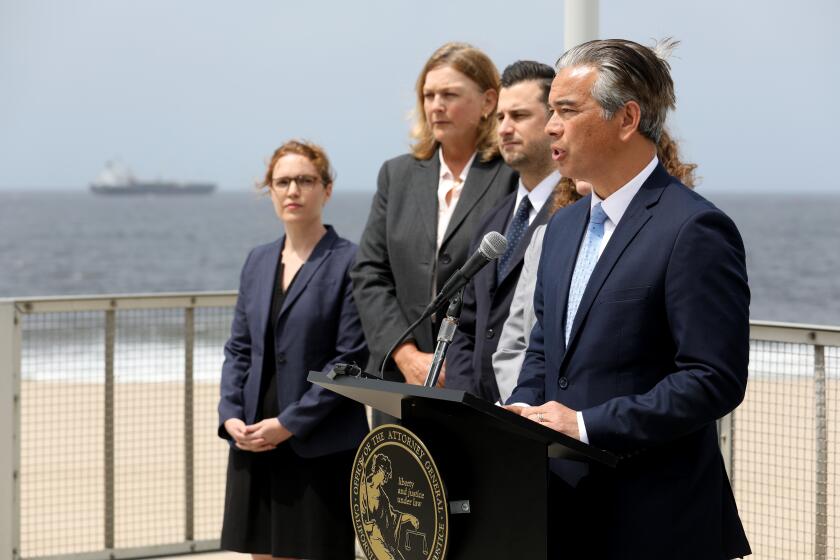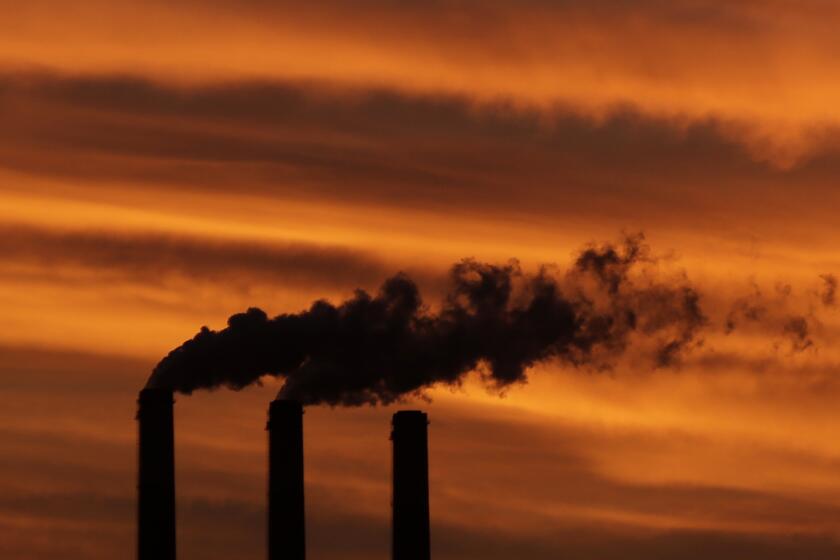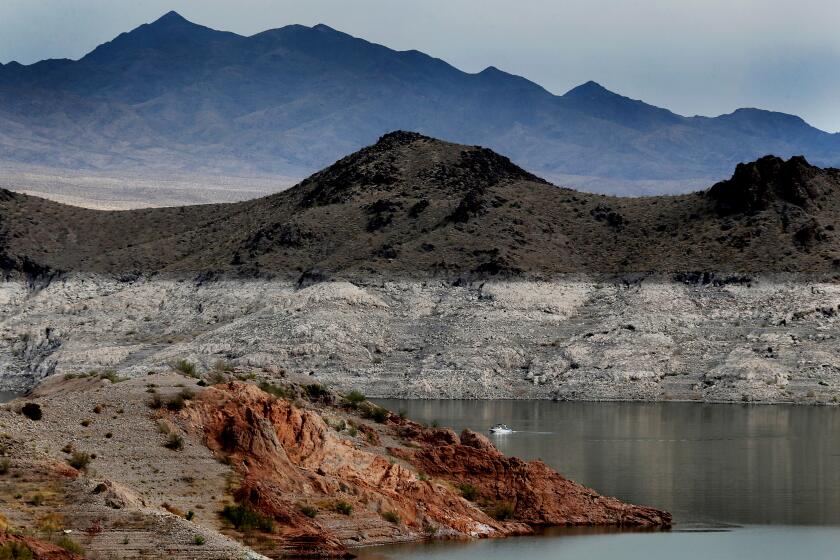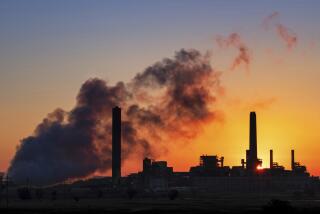Supreme Court leaves dwindling paths for Biden’s climate mission
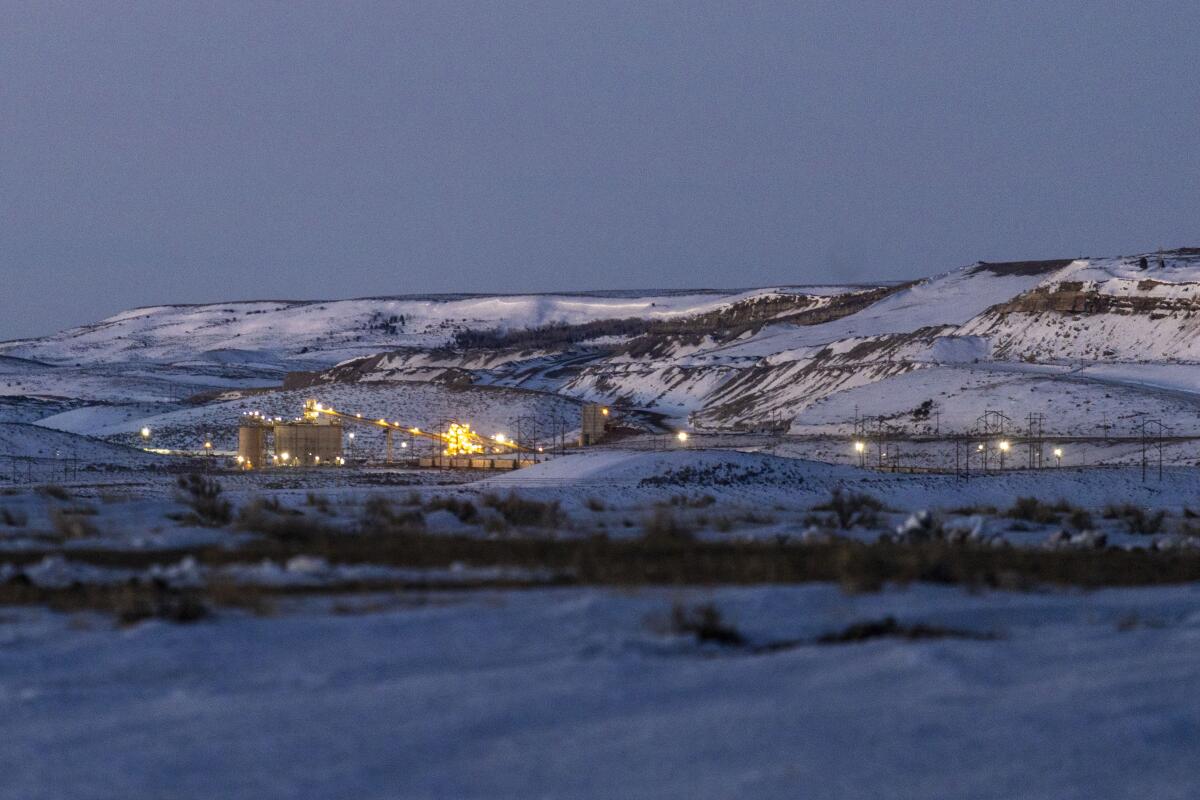
WASHINGTON ‚ÄĒ More than 500 days into his presidency, Joe Biden‚Äôs hope for saving the Earth from the most devastating effects of climate change may not quite be dead.
But it’s not far from it.
A Supreme Court ruling Thursday not only limited the Environmental Protection Agency’s ability to regulate climate pollution by power plants, but also suggests the court is poised to block other efforts by Biden and federal agencies to limit the climate-wrecking fumes emitted by oil, gas and coal.
It’s a blow to Biden’s commitment to slash emissions in the few years scientists say are left to stave off worse and deadlier levels of global warming. And it’s a sign, to Democrats at home and allies abroad, of the dwindling options remaining for Biden to reverse the legacy of former President Trump, who mocked the science of climate change. Trump’s three Supreme Court appointees provided half of the affirmative votes in Thursday’s 6-3 ruling.
After the ruling, a veteran Democratic lawmaker acknowledged he saw little hope of Congress producing any meaningful climate legislation, either. ‚ÄúThere‚Äôs no easy fix from Congress from this mess,‚ÄĚ Sen. Sheldon Whitehouse of Rhode Island said. The foreign allies whom Biden once spoke of leading to a global clean-power transformation are wondering if the United States can even lead itself.
The climate decision in some ways ‚Äúmay have broader impacts at least on the European populace that this is a country that, a) can‚Äôt get things done, and b) is going in a really bizarre direction domestically,‚ÄĚ said Max Bergmann, director of the Europe program at the Center for Strategic and International Studies.
And in a Houston neighborhood entering hurricane season, a man who had spent four decades advocating for the Black community and other communities of color, as well as for poor communities hit hardest by pollution and the record heat, cold, floods and storms of climate change, reacted to the ruling as many others did ‚ÄĒ saying salvaging climate efforts depends on Biden now, and his willingness to act and lead.
Experts say U.S. Supreme Court ruling is not likely to unravel California’s ambitious climate goals to eliminate its carbon footprint by 2045.
‚ÄúThis is real,‚ÄĚ said Robert Bullard, an academic who became a pioneer in what became the U.S. environmental justice movement, of the multiplying natural disasters ‚ÄĒ the kind scientists say are influenced by the heating atmosphere ‚ÄĒ wrecking cities on America‚Äôs vulnerable Gulf of Mexico.
‚ÄúThose communities that have been flooded out ... some of those communities still have blue tarps on their houses,‚ÄĚ Bullard said. ‚ÄúSo I don‚Äôt think the Supreme Court and some of our elected officials are speaking about the urgency of where we are when it comes to our climate.‚ÄĚ
Biden’s EPA still has meaningful moves left to make, but it must move quickly, Eric Schaeffer, a former director of civil enforcement at the agency, said in a statement. Among them: speed up a new rule limiting carbon pollution from power plants, make long overdue updates to standards on toxic discharges from the plants and move faster to crack down on leaks of climate-damaging methane in natural gas as the Biden administration has already promised.
After Thursday’s ruling, the EPA pledged to propose a new carbon rule for power plants by early next year.
Biden has pledged to cut the nation’s greenhouse gas emissions in half by the end of the decade and to have an emissions-free power sector by 2035.
‚ÄúOur fight against climate change must carry forward, and it will,‚ÄĚ Biden said in a statement after the ruling that offered no guarantees of success.
Ruling in favor of coal-producing states, Supreme Court says Congress, not the EPA, has the authority to make decisions on fighting climate change.
His team would ‚Äúfind ways that we can, under federal law, continue protecting Americans‚ÄĚ from pollution and climate change, Biden said.
The dismay expressed at the Supreme Court action by many who say they care deeply about climate change reflected this was only the latest setback to Biden’s early promises to slash emissions.
A divided Congress already handed Biden what’s been the worst climate defeat of his term so far when two Democrats, including Sen. Joe Manchin III of coal-producing West Virginia, joined Senate Republicans in refusing to pass Biden’s Build Back Better package.
Climate parts of the legislation were meant to jump-start America’s transformation into a land of electric cars, clean industry and energy-efficient buildings. Biden was able to move forward some smaller parts of his proposal, including electric car charging stations.
And this year, in a development as dangerous for Biden’s early climate hopes as the Supreme Court ruling, a global oil and gas supply crunch has sent gas prices pinging off record highs. It has fueled inflation and voter anger against Biden, and potentially other Democrats.
Recurring drought and rising temperatures have already begun to alter the landscape of California and the American Southwest, researchers warn.
The energy shortfall left Biden scrambling for additional oil and gas. It has also left unclear whether he still believes he has the political capital to lead the U.S. move to renewable energy as decisively as he promised as a candidate and in his first months in office.
The ruling left policy experts, lawmakers and ordinary people saying Biden, Democrats and climate-minded Republicans still have some routes left to push through climate efforts.
One is ambitious, shrewd executive action ‚ÄĒ if Biden dares ‚ÄĒ to push through carefully targeted emission-cutting steps.
A second is climate action by California and the other blue states that earlier swung into action to challenge Trump’s climate rollbacks in court.
A third option is a pitch that Biden and Democrats are throwing to voters more and more ‚ÄĒ elect enough Democrats in the midterms to allow Congress to pass laws thwarting rollbacks by conservatives, in Congress and on the Supreme Court.
As Lake Mead shrinks after almost two decades of severe drought, accumulated items on the lakebed are being exposed.
The Supreme Court ruling came as Biden was savoring a successful gathering with North Atlantic Treaty Organization allies, which have rallied behind the U.S. in confronting Russia‚Äôs invasion of Ukraine. After Biden‚Äôs early proclamations in summits at the outset of his term that ‚ÄúAmerica is back!,‚ÄĚ the setback in the Supreme Court underscored to allies how vulnerable the U.S. president remains on the domestic front, including when it comes to fulfilling climate commitments.
As the ruling was released, Biden envoy John Kerry was flying out after an oceans conference in Portugal, still working for global and country-by-country commitments to cut emissions. Kerry’s pledges on U.S. climate ambitions have grown more muted as obstacles grow.
The domestic climate setbacks have helped slow early global momentum for climate breakthroughs. They‚Äôve weakened U.S. leverage as Kerry presses countries such as China to swing away from coal and other damaging fossil fuels ‚ÄĒ something Biden had pledged the U.S. would lead on by example.
More to Read
Sign up for Essential California
The most important California stories and recommendations in your inbox every morning.
You may occasionally receive promotional content from the Los Angeles Times.
